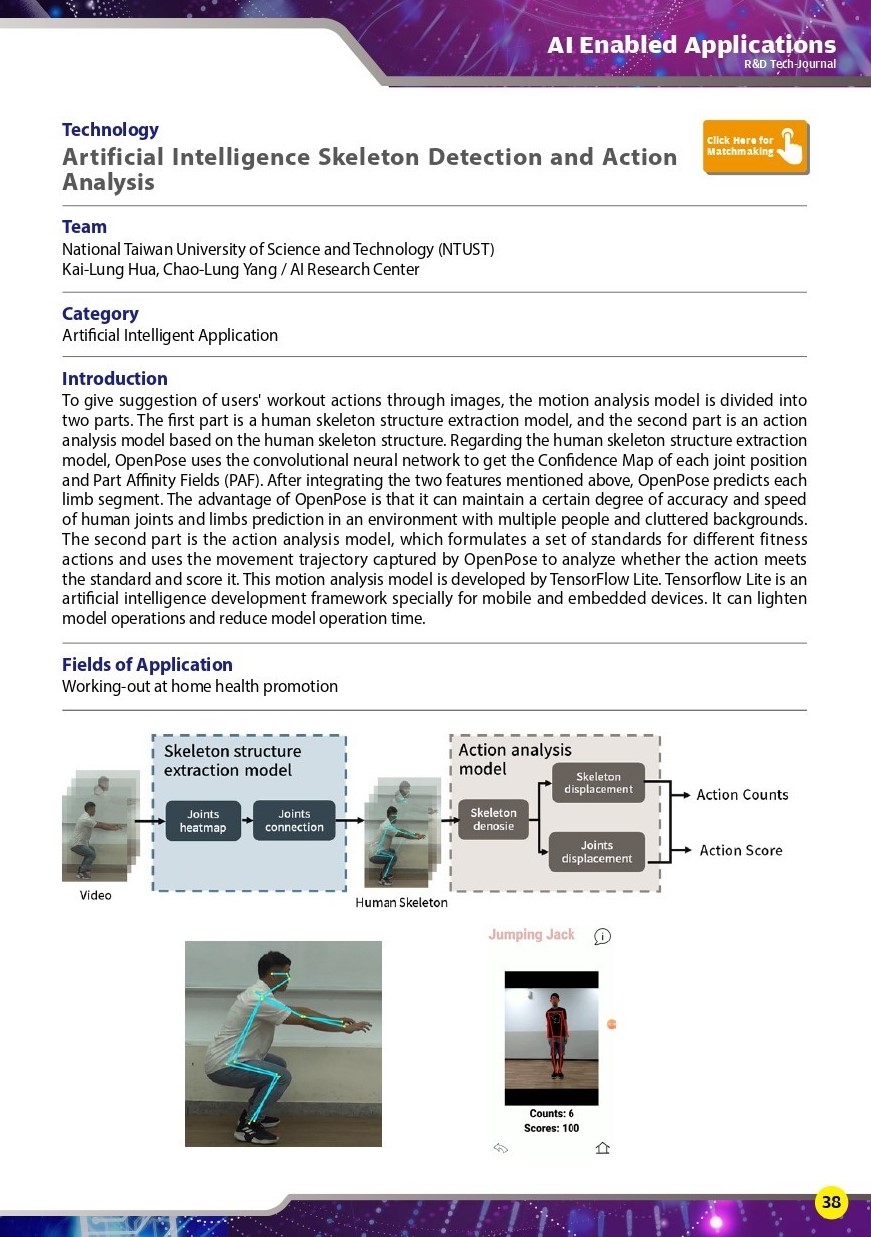【AI enabled applications R&D Tech journal】
Artificial Intelligence Skeleton Detection and Action Analysis
An IDC report stated that global spending on AI will grow from USD 85.3 billion in 2021 to more than USD 204 billion in 2024 with a CAGR of 24.5% in the 2021-2025 period. This growth is expected to happen as businesses and organizations express interest and invest more in AI and its related technologies due to its versatile uses. Common applications today are used to improve customer insights, employee efficiency, and to accelerate innovation.
According to Ritu Jyoti, Group Vice President, Worldwide Artificial Intelligence (AI) and Automation Research with IDC's software market research and advisory practice; the COVID-19 pandemic has become a driver for innovation. AI applications today focus on “developing commercial applications that optimize efficiencies in existing industries”. This will include smart & intuitive machine learning/ deep learning algorithms in various applications that will benefit organizations. Currently, the fastest growth of AI expenditures is in retail and banking.The Global Research & Industry Alliance (GLORIA) teams developed nearly 30 academic AI technologies as well as vertical AI applications. The solutions featured in this journal include: smart medical care, smart agriculture, smart aquaculture, smart manufacturing, and more. Taiwan’s major technology companies are more than welcome to cooperate with the teams developing these diverse AI applications and technologies. The cooperation between businesses and academic projects will help in accelerating the research and development of industrial AI solutions, as well as expanding the business potential of AI technologies globally.
If you have any questions regarding matchmaking, please contact:gloria@mail.ntust.edu.tw

AI enabled applications R&D Tech journal-Artificial Intelligence Skeleton Detection and Action Analysis (NTUST Kai-Lung Hua, Chao-Lung Yang / AI Research Center)
